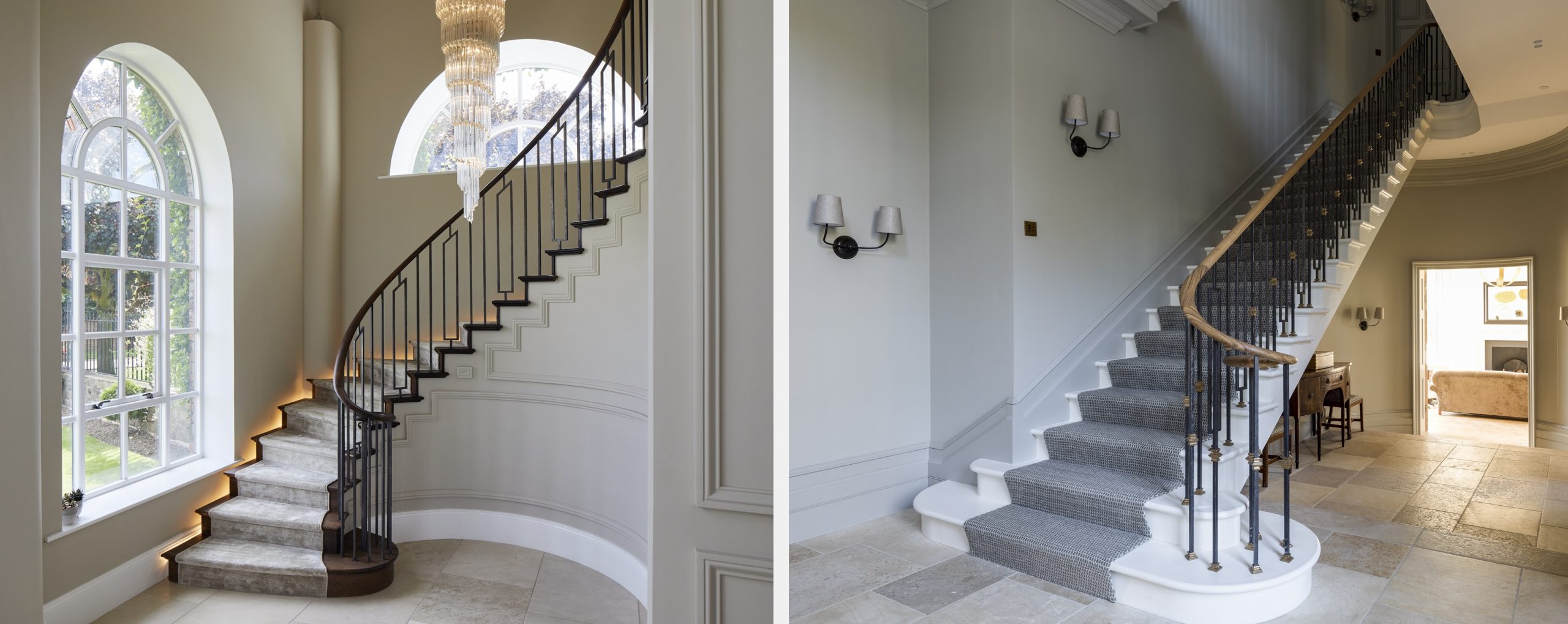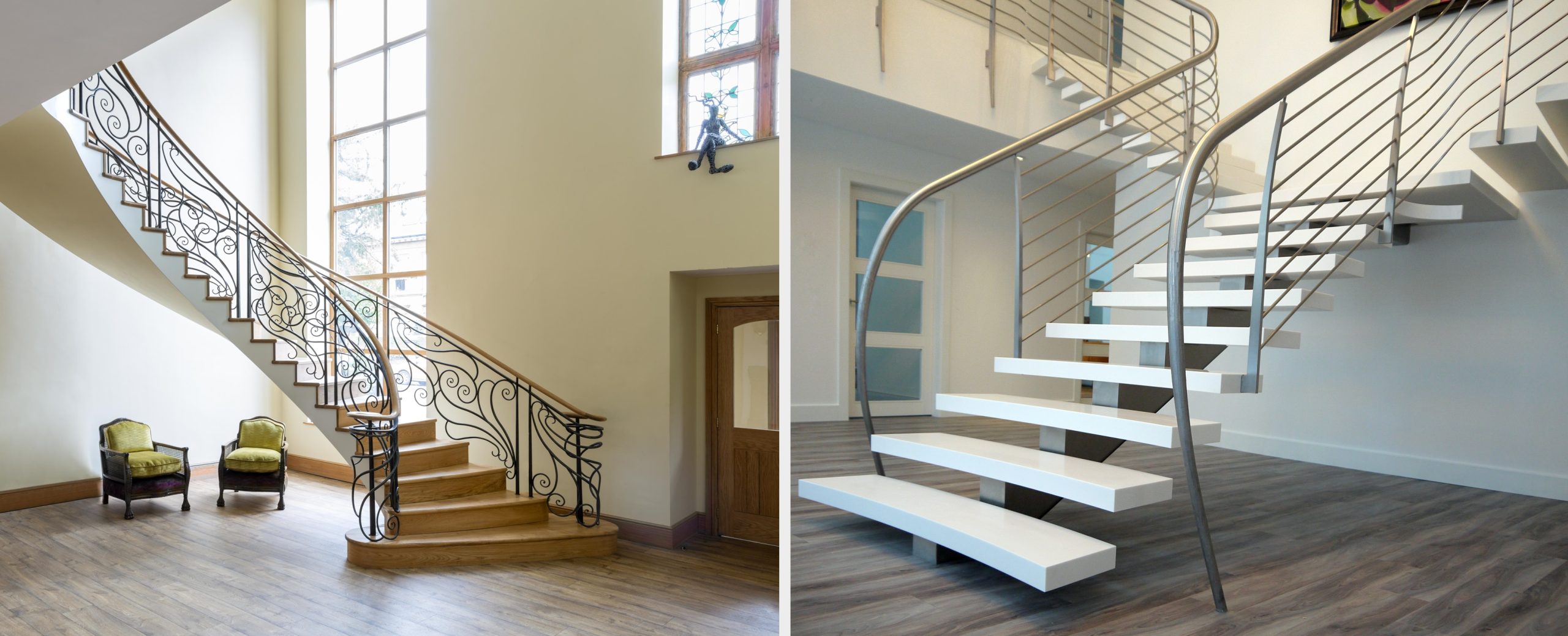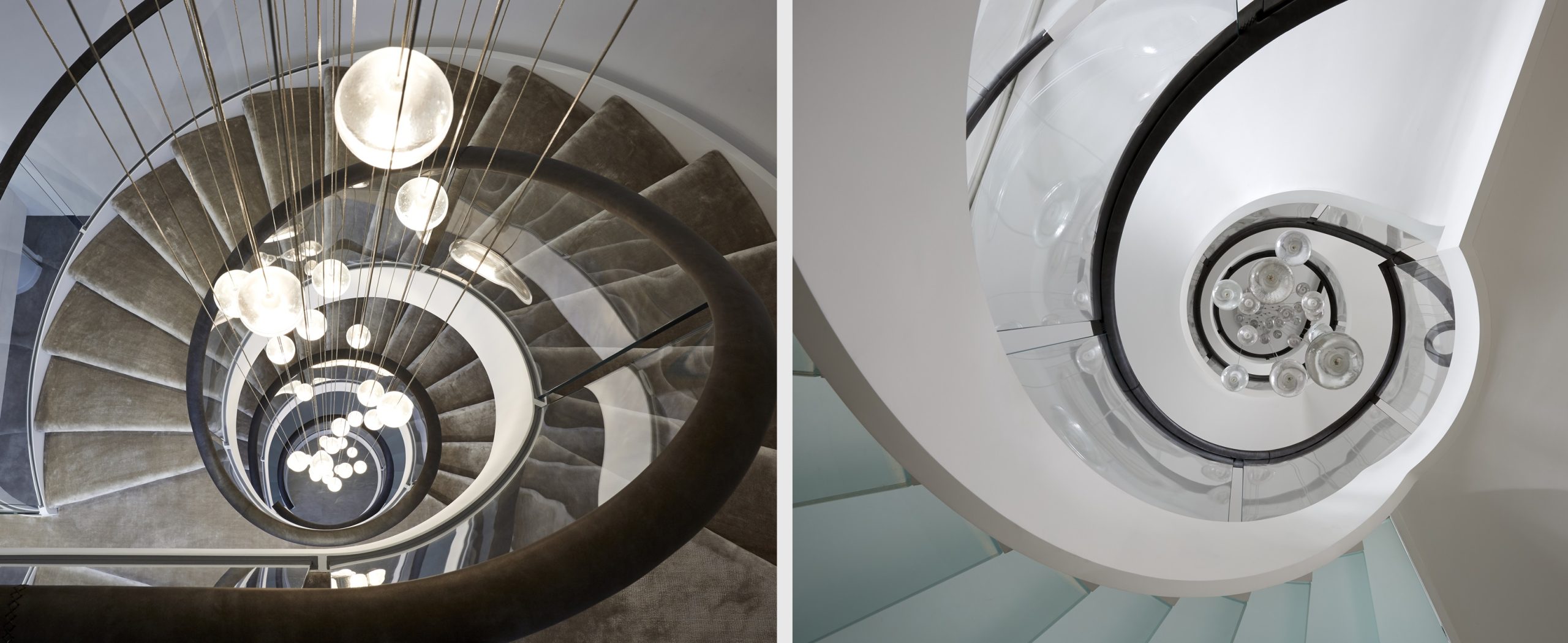Stepping Through Time: Bisca Reveals Top Staircase Trends and Design Ideas
Discover 30 years of staircase design ideas with Bisca – an evolution encompassing oak, glass and sculptural floating designs which redefine modern interiors.
In the world of architecture and interiors, few elements occupy such a unique intersection of utility and artistry as the staircase. Over the past 30 years, at Bisca we’ve had the privilege of helping shape that transformation – taking the staircase from a structural feature; to a sculptural anchor, which today has the potential to enhance spatial flow, ambiance, and lasting identity of a home or building while developing new staircase ideas.
“The staircase is no longer an afterthought,” founder and designer director of Bisca, Richard McLane confirms. “It is a centrepiece – an architectural gesture which reflects both the client’s identity and the spatial intent of the home”.
If you are looking for a staircase which offers far more than a means of movement – helping you define a space and tell a story, to become the emotional and architectural heart of your property, our latest blog provides a range of staircase ideas and trends which will support you in this process.
Staircase Ideas From The 90s: When Artistry Meets Experimentation
When Bisca was founded in the mid-1990s, staircase design was full of creativity and experimentation. Two dominant styles defined the era: highly decorative, free-flowing staircases inspired by Art Nouveau and Gaudí; and minimalist, industrial designs featuring exposed steel and geometric strength. Both were sculptural, expressive, and unapologetically bold.

Projects like our Art Nouveau-inspired staircase in Newcastle, with its sweeping hand-forged balustrade, celebrated the artistry of metalwork. Meanwhile, our seamless Corian helical staircase in New York pushed the boundaries of material innovation, blending form and function in ways that were groundbreaking at the time. Richard McLane explains:
“Those early years were about testing boundaries – working with clients who wanted something truly unique, expressive, and unrepeatable. We explored metal, timber, glass, and emerging composites, each project helping to define our philosophy: that a staircase can be both a feat of engineering and a piece of living sculpture.”
Present Day Staircase Ideas: Refined Elegance and Rising Restraint
As open-plan living has taken hold over the last decade,interiors have become lighter and more minimal. Over this period, Bisca has continued to evolve with floating treads, cantilevered forms, and frameless glass balustrades now being recognised as hallmarks of our approach.
In recent years, we’ve seen a beautiful balance emerge between tradition and modernity. While some clients love the purity of minimalist designs with crisp geometries and hidden fixings, others are rediscovering the warmth and elegance of classical influences suited to contemporary life.

Our curved oak staircase in Yorkshire, for example, combines the timeless symmetry of Georgian architecture with modern engineering. In contrast, we designed and crafted a helical glass staircase in Middlesex which exemplifies the elegance that can be achieved through material precision, applying technical complexities which incorporate a slender profile of both steel and structural glass.
“Today’s clients are more design-savvy than ever,” Richard McLane remarks. They come to us with strong ideas and high expectations, seeking staircases that feel authentic to their lifestyle and architecture – they crave design that will endure not just structurally, but emotionally and stylistically.”
What is Causing Staircase Ideas to Change
Three key forces behind the evolution of staircase design are driving change. These each are creating a unique and growing demand for staircase specialists to collaborate with project partners such as architects and interior designers to achieve the best result:
- Design inspiration is everywhere. Digital platforms have empowered clients with access to global ideas, resulting in higher expectations and a growing desire for a bespoke staircase solution.
- Material and structural innovation. Advances in engineering allow us to create thinner, lighter, more expressive forms. Our use of cantilevers, engineered glass, and hybrid materials have opened doors to previously impossible designs.
- A focus on longevity. Clients increasingly value sustainable design. We often work with reclaimed timber, forged metals, and hand-applied finishes that age beautifully over time.
Planning Ahead – So Form Meets Future

What hasn’t changed in 30 years is Bisca’s commitment to craftsmanship, collaboration, and context. Whether we’re crafting a staircase from repurposed canal lock gates or forming a bronze ribbon that spirals across four storeys, every design begins with understanding the architecture – and the story a building wants to tell.
Each of Bisca’s staircases is designed, engineered, and hand-built by our team in North Yorkshire, ensuring that every component adds both structural integrity and emotional value to the space it inhabits. Richard continues:
“For us, a staircase is never just about movement – it’s about creating an experience you will always remember – and a feature that intricately connects people to place, form to feeling, and craftsmanship to everyday life.”









